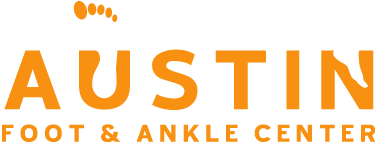Essential Strategies for Preventing Running Injuries
Running, while a fantastic form of cardiovascular exercise, can sometimes lead to injuries if proper precautions aren’t taken. Understanding the common causes of running injuries and implementing strategies for prevention can help runners maintain their health and improve their performance.
Common Causes of Running Injuries
Running injuries often stem from a combination of factors rather than a single cause. Understanding these can help runners minimize risks and enjoy a healthier, more sustainable running practice. Here are the expanded details on common causes of running injuries:
Overtraining and Inadequate Recovery
- Excessive Mileage: Increasing running distance too quickly without allowing the body to adjust can lead to overuse injuries.
- Insufficient Rest Days: Rest is crucial for muscle recovery and repair. Skipping rest days compromises the body’s ability to heal and strengthen, increasing injury risk.
Improper Footwear
- Poor Fit: Shoes that don’t fit correctly can cause blisters, calluses, and structural injuries due to inadequate support and cushioning.
- Worn-Out Shoes: Running in shoes past their prime diminishes the protection and support your feet and joints need, leading to increased impact forces on your body.
- Incorrect Type: Using shoes that are not designed for your running style, foot type, or the surface you run on can lead to biomechanical imbalances and stress on different parts of the foot and leg.
Lack of Flexibility and Muscle Strength
- Tight Muscles: Limited flexibility increases the risk for muscle strains and sprains. Tight hamstrings and calf muscles, for example, can alter gait and place additional stress on the feet and knees.
- Weak Muscles: Weakness in key muscle groups involved in running, such as the glutes, quadriceps, and core, can lead to improper running mechanics, increasing the strain on joints and ligaments.
Biomechanical Issues
- Poor Running Form: Running with improper form, such as overstriding or inadequate foot strike, can lead to inefficient movement patterns and increased injury risk.
- Structural Imbalances: Differences in leg length, flat feet, or excessively high arches can alter normal running mechanics, leading to uneven distribution of forces across the lower body.
- Previous Injuries: Prior injuries can result in compensatory movement patterns that place unusual stress on other parts of the body, potentially leading to new injuries.
Environmental Factors
- Hard Running Surfaces: Consistently running on hard surfaces without adequate shock absorption can increase the stress on bones and joints.
- Uneven Terrain: Running on uneven or unstable surfaces, like trails with rocks and roots, can lead to twists, sprains, and falls.
Training Errors
- Rapid Intensity Increases: Significantly increasing the intensity of workouts without adequate adaptation time can shock the body, leading to injury.
- Inadequate Warm-up and Cool-down: Skipping warm-up and cool-down sessions can leave muscles stiff and less flexible, increasing the risk of strains and injuries.
Key Injuries and Their Prevention
Running injuries can range from mild discomfort to severe conditions that require extended rest and rehabilitation. Understanding these key injuries and their specific prevention strategies is crucial for maintaining long-term running health.
Runner’s Knee (Patellofemoral Pain Syndrome)
A runner’s knee is characterized by pain around or behind the kneecap, often exacerbated by running, climbing stairs, or sitting for long periods. It’s typically caused by misalignment of the kneecap or increased stress under the knee due to weak or imbalanced thigh muscles.
Prevention:
- Strengthening Exercises: Focus on strengthening the quadriceps, hamstrings, and hip muscles to ensure proper knee alignment and distribution of forces through the knee.
- Proper Footwear: Wear supportive running shoes that match your gait and running style.
- Running Form Adjustments: Maintain a proper running form, avoiding overstriding and ensuring your knees are properly aligned over your feet.
Iliotibial Band Syndrome (ITBS)
ITBS occurs when the iliotibial band, a ligament that runs down the outside of the thigh from the hip to the shin, becomes tight or inflamed. The pain is typically felt on the outside of the knee.
Prevention:
- Stretching: Incorporate stretching exercises for the hips, glutes, and iliotibial band into your routine.
- Strengthening: Focus on hip abductor and glute strengthening exercises to improve stability and reduce tension on the IT band.
- Gradual Mileage Increase: Avoid sudden increases in running distance or intensity, which can strain the IT band.
Plantar Fasciitis
Plantar fasciitis involves inflammation of the plantar fascia, a thick band of tissue that runs across the bottom of your foot and connects your heel bone to your toes. It causes sharp heel pain that is often worse in the morning.
Prevention:
- Footwear: Choose shoes with adequate arch support and cushioning.
- Arch Support: Consider using orthotics if you have flat feet or overly high arches.
- Stretching and Strengthening: Regularly stretch your calves and the arch of your foot. Strengthening the foot muscles can also provide better support to the plantar fascia.
Stress Fractures
Stress fractures are tiny cracks in a bone caused by repetitive force, often from overuse. Runners might experience them in the feet or shins.
Prevention:
- Proper Footwear: Wear running shoes that provide sufficient cushioning and support.
- Cross-Training: Incorporate low-impact activities like swimming or cycling into your training to reduce stress on your bones.
- Nutrition: Ensure your diet includes enough calcium and vitamin D to support bone health.
Prevention Tips for All Running Injuries
- Warm-up and Cool-down: Begin each running session with a gentle warm-up and end with a cool-down period, followed by stretching.
- Listen to Your Body: Pay attention to pain and discomfort. Early intervention can prevent minor issues from becoming severe injuries.
- Rest and Recovery: Incorporate rest days into your training schedule to allow your body time to recover.
- Progress Gradually: Increase your running mileage and intensity by no more than 10% per week to avoid overloading your muscles and joints.
Comprehensive Prevention Strategies
- Proper Footwear: Invest in running shoes that fit well and offer the right level of support for your foot type. Replace shoes regularly to ensure they provide adequate cushioning and support.
- Balanced Training: Develop a training plan that includes rest days to allow for muscle recovery. Gradually increase your running distance and intensity to avoid overuse injuries.
- Strength and Flexibility Training: Incorporate exercises that strengthen the muscles used in running and improve overall flexibility. Pay particular attention to the quadriceps, hips, and calves.
- Pre- and Post-Run Stretching: Engage in dynamic stretching before running to warm up the muscles and static stretching afterward to improve flexibility and decrease muscle stiffness.
- Listen to Your Body: Pay attention to signs of fatigue or discomfort, which may indicate the need for rest or a reassessment of your training and running techniques.
Conclusion
Preventing running injuries requires a holistic approach that includes proper footwear, balanced training schedules, and attention to physical conditioning. By understanding the common causes of injuries and adopting preventive measures, runners can enjoy the benefits of their sport while minimizing the risk of harm. Remember, if you’re experiencing persistent pain or discomfort, consulting with a healthcare professional or podiatrist can provide personalized advice and treatment options to keep you running safely and effectively.


